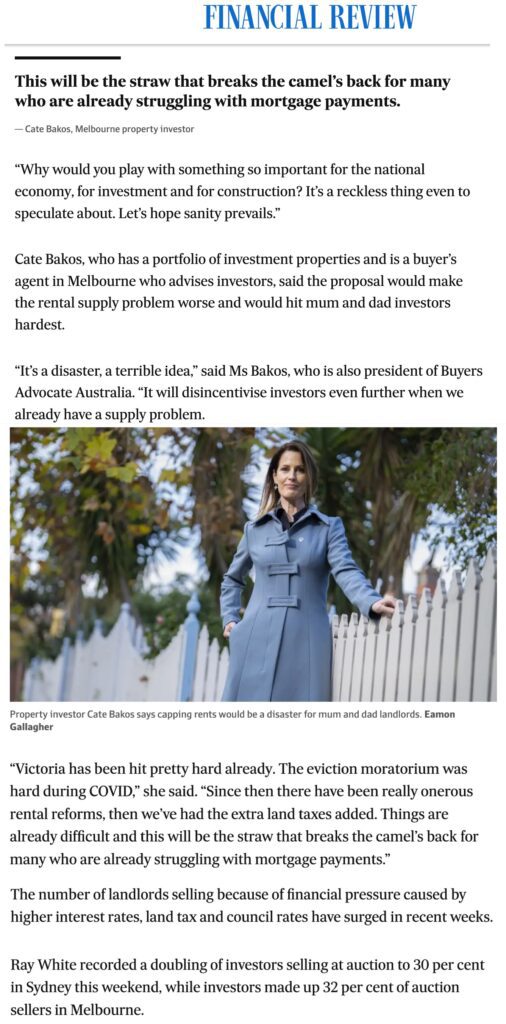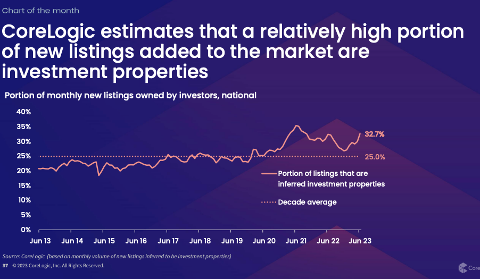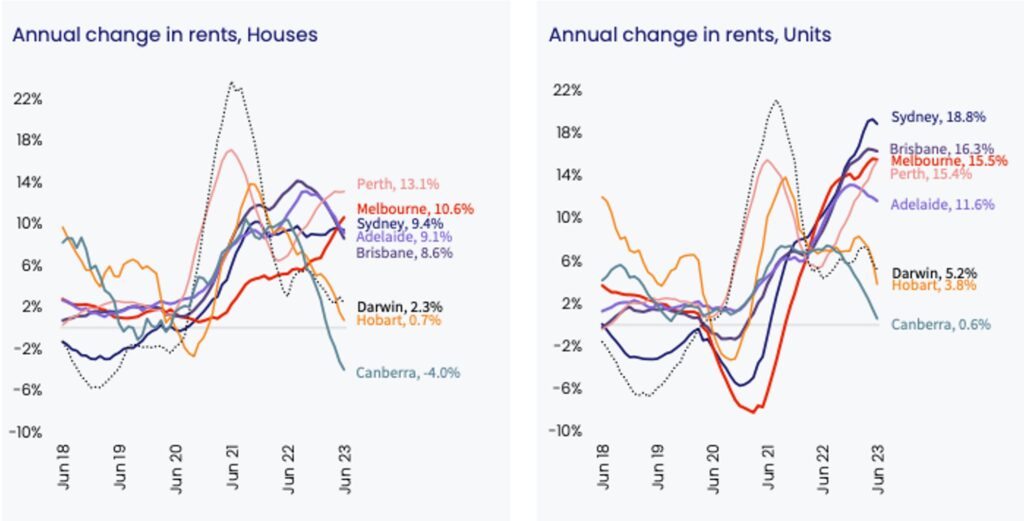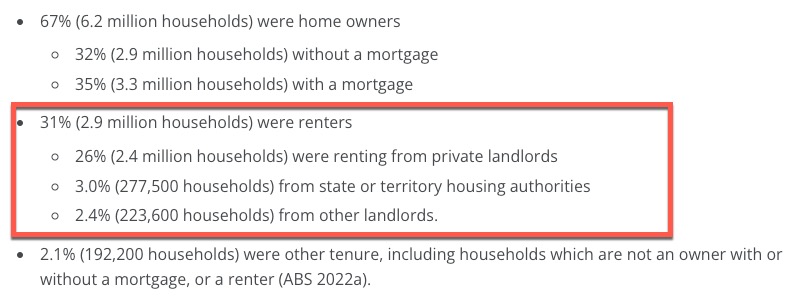What would shoe shop owners do if the government walked into their store and said, “Whatever environmental and financial pressures you face, you cannot increase the cost of this pair of shoes for two years?”
And what would share investors do if the government ran a pencil over their share portfolio and said “whatever the performance of your shares and the various companies you have invested in, we are going to cap your dividends to your current rate for the next two years?”
The shoe store owner would probably consider a different business option. And the share trader would likely consider a different asset class to invest their money in. Neither would be particularly impressed with the government suggesting that their returns are controlled.
This is what some Australian property investors are facing.

As quoted in this article, Victorian rental providers have sustained quite a few challenges in recent years.
Until 2021, rent increases were particularly slow, and for many markets in our state, landlords couldn’t apply any rent increases. Vacancy rates didn’t support rent increases despite capital growth rates staying positive. What this meant for many investors is the gross rental yield dropped as property values grew, and while capital growth is rewarding, the cost of holding a property with low rental yields increases. Other states and cities have offered more optimal rental yields than Melbourne has, and we have seen investor participation slow over the decades. Combined with our credit squeeze from 2016-2019, investor activity declined markedly in the lead-up to 2021.
Melbourne’s lockdowns were horrid for many investors who received no financial support during the enforced eviction moratorium. Investors were basically left to sort out their own finances as renters faced financial hardship. Many entered into subsidised rental arrangements with their tenants during this time, myself included.
The increase in interest rates have now struck, and the cost of holding has become unworkable for many. Unfortunately this is reflected in sales activity, with Core Logic’s findings indicating that the percentage of investors selling has increased from a ten year average of 25% to a whopping 32.7% now.
In other words, one third of all properties for sale nationally are investors who are off-loading their investment properties.

This chart was produced before the two year rent caps discussion began, and in this short time I have had many clients reaching out to discuss the merits of holding their property asset.
Our State Government’s announcement to increase Victorian land tax and reduce the tax-free threshold was a blow for investors when announced in May, but the rent caps proposal will no doubt steer investors away from property.
What does this mean for renters?
We already have a declining rental pool. Agents are reporting that their rent rolls are being decimated. The problem is that not all investment properties are selling to those in need of shelter. Plenty are being sold as part-time homes to those who already have a coastal or country property. With hybrid and full-time return to work orders being enforced, many of those who have enjoyed the tree-change/sea-change are optimising their lifestyle and commute by purchasing a pad in town.
We have worked with numerous clients who are doing just this.
The diminishing number of rental properties will only bring our rental crisis to heftier levels. Already, our rents are soaring in most cities.

The State and Federal Government’s new housing plans will not even remotely address the issue. The number of properties that they are proposing to build, (whenever The Greens enable them to actually do so) is insignificant in number, compared to the number of houses required to address this issue.
To add perspective, the vast number of rental properties are owned and supplied by private investors like me.

83% of rental properties are privately owned, and only 9.5% are owned and provided by the government.
So what can investors do?
Some will choose to sell. Others will ride the storm and hope that sensibility will prevail. Like the terrible decision that Queensland’s State Government made in relation to land tax reform, the proposed rent cap model will likely be repealed if legislated, whether it be repealed in response to investors abandoning the property sector, or a change in government.
For those who do manage to ride the storm, the likelihood of significant rent increases is high. After all, a fast decline in rental stock levels can only lead to one thing.
In the meantime, we can do something. Here is a link for a submission to the Parliament of Australia.
This isn’t the first challenge that property investors have faced though, and it won’t be the last. Like all ridiculous policies, it won’t work and we need to figure out how to ride the storm until sensible decisions prevail.
More information:
REGISTER TO OUR NEWSLETTER
INFORMATION
CONTACT US
1A/58 ANDERSON STREET,
YARRAVILLE VIC 3013
0422 638 362
03 7000 6026
CATE@CATEBAKOS.COM.AU
